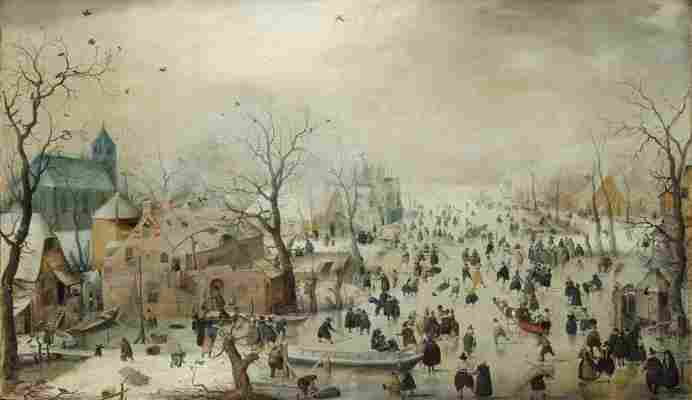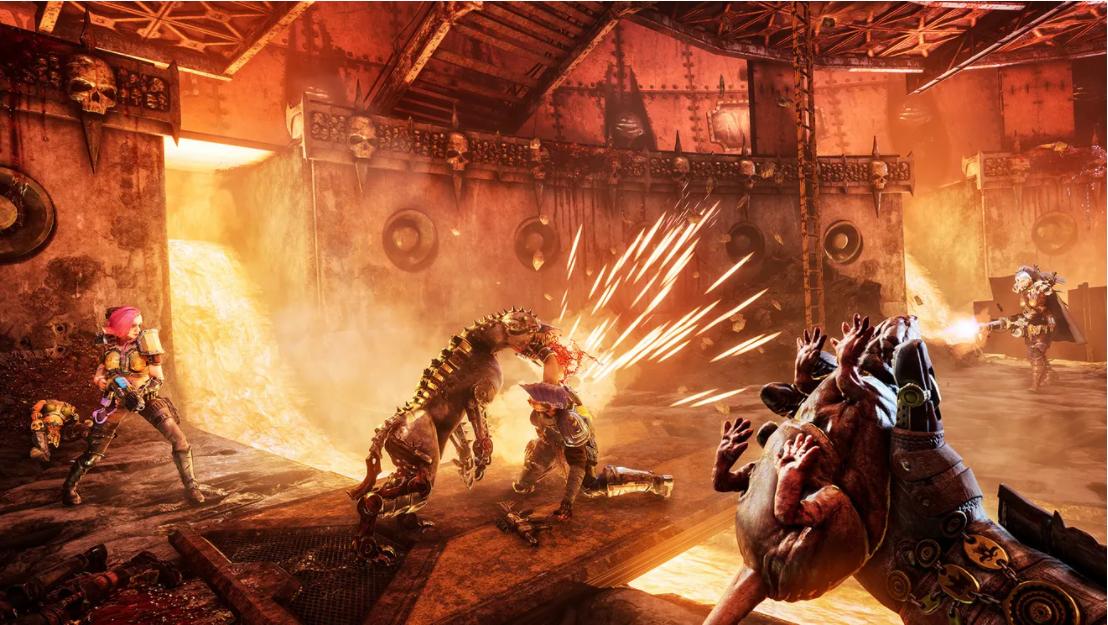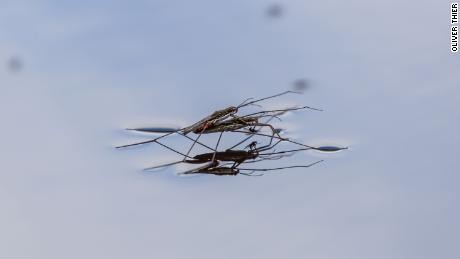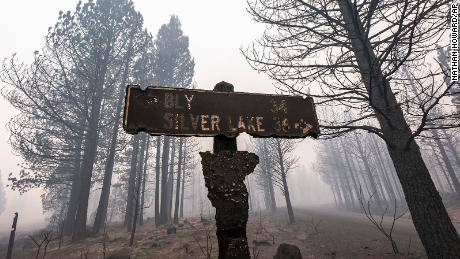Winter Landscape with Skaters Winter Landscape with Skaters
Hendrick Avercamp was one of the most popular painters of the “ Dutch Golden Age,” a time period (around the 17th century) when art, science, and trade flourished in the Netherlands.

Avercamp, who was most likely deaf , specialize d in painting winter scenes, when Dutch citizens enjoyed working and socializing on the country’s many frozen canal s and rivers.
“Winter Landscape with Skaters” (1608) is a typically lovely example of Avercamp’s style. He uses formal artistic technique s and rich individual scenes to paint a picture of an entire community .
Three major techniques create the illusion of space and depth in the painting. First, Avercamp has designed his painting as a triangle—the wide canal narrows as it disappears into the background at the top of the canvas. Second, the frost y landscape eventually blends into the white, wintry clouds in the background. Finally, the figures in the foreground (bottom of the canvas) are painted in precise detail, while the smaller figures in the background are mere sketches.
The incredible variety of individual scenes makes “Winter Landscape with Skaters” a slice-of-life depict ion of the Netherlands in the 17th century. Women and men, young and old, rich and poor all mix and mingle in the sunny, snowy scene.
Instructional Ideas
Consult National Geography Standard 15.3 (4th grade): How physical systems affect human systems: People adapt to the conditions of the physical environment.
Discuss how people adapt to seasonal changes in the physical environment. Changes might be reflected by: clothing housing food recreation transportation Questions in the “Questions” tab explore some ways the physical environment and human systems in “Winter Landscape with Skaters” would change with the seasons.












Write a Comment